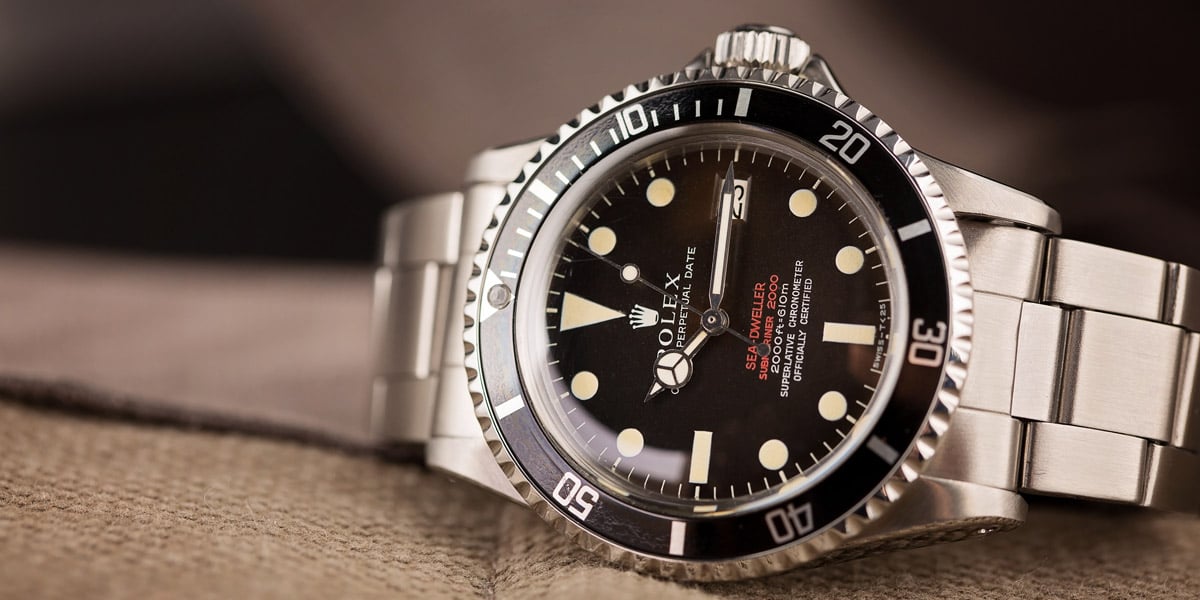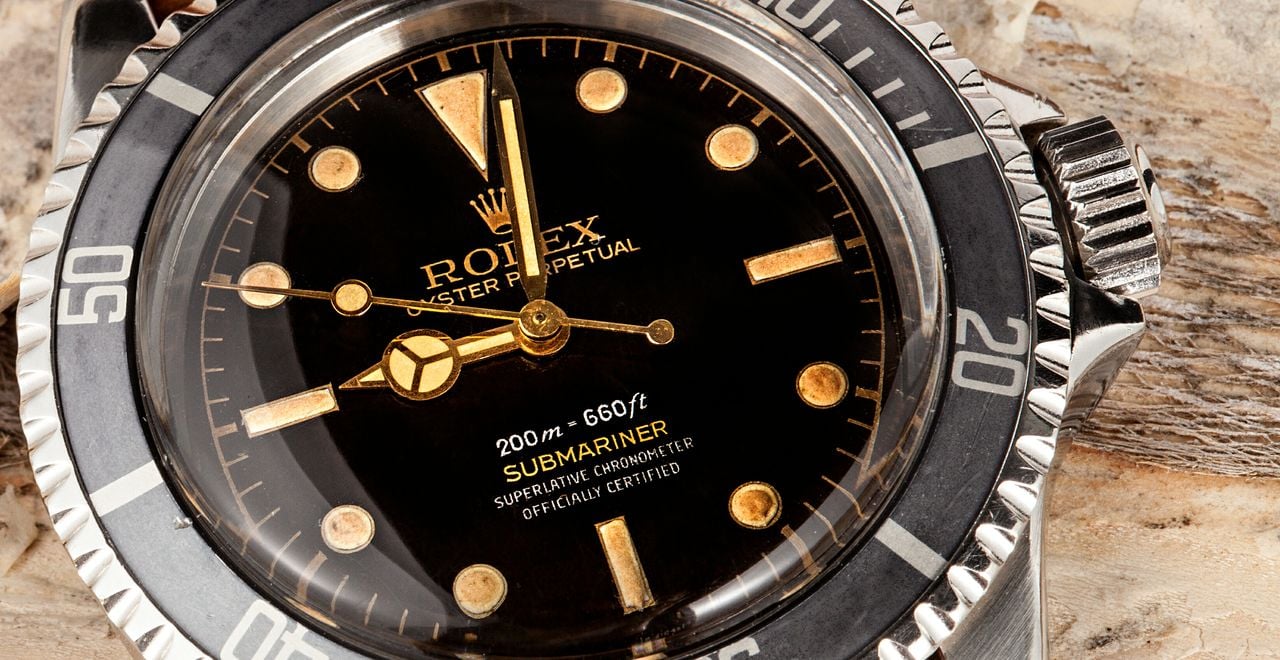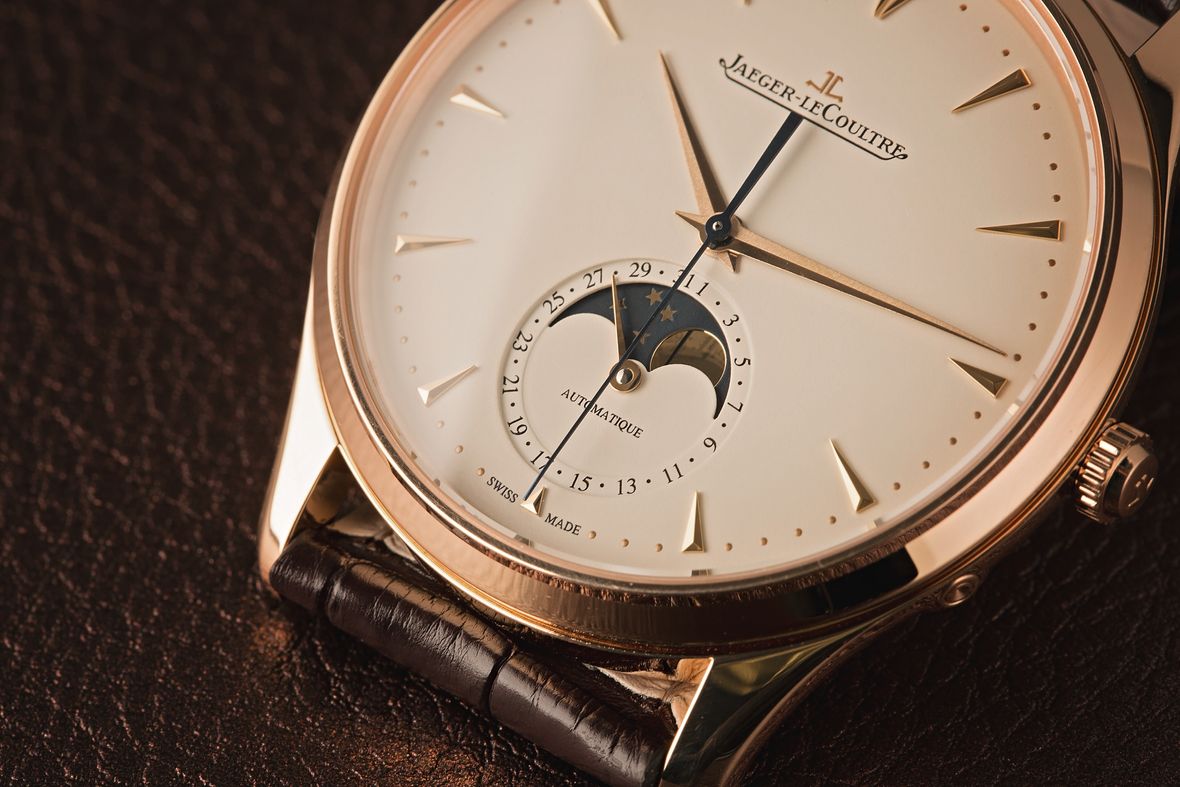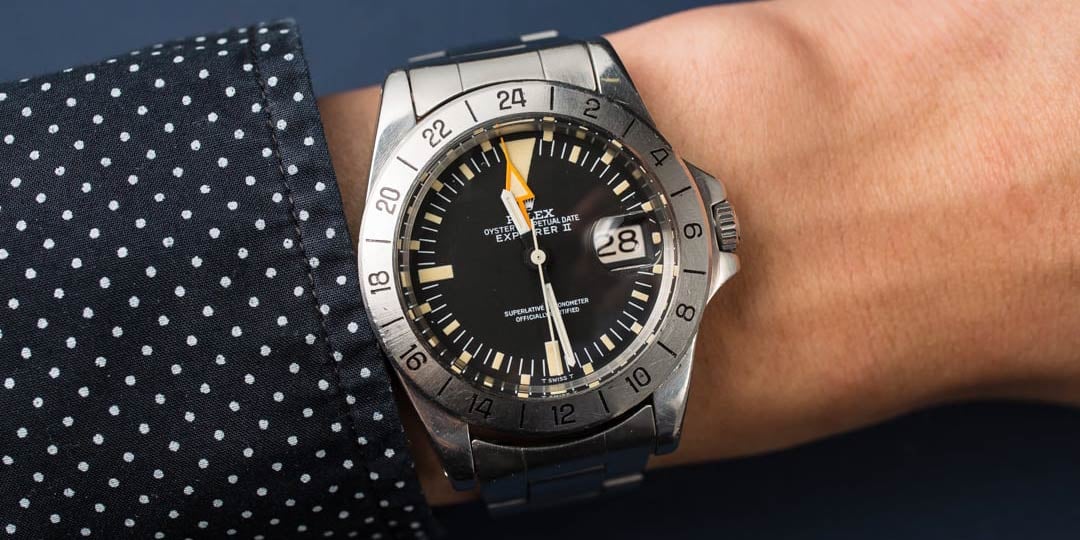In this Rolex buying guide, we answer the age-old question, what is the difference between the GMT Master and GMT Master II? There’s no denying that there are plenty of similarities between both models. They both have dual-time capabilities with a 24-hour bezel and an extra hand on the dial. If you weren’t a very experienced collector, it might be hard to tell the difference without holding the actual watches in your hands or paying close attention to the finer details. However, there are many differences between the GMT Master and GMT Master II, both in form and function. Let’s take a detailed look at one of the most iconic models, the Rolex GMT-Master Watch.
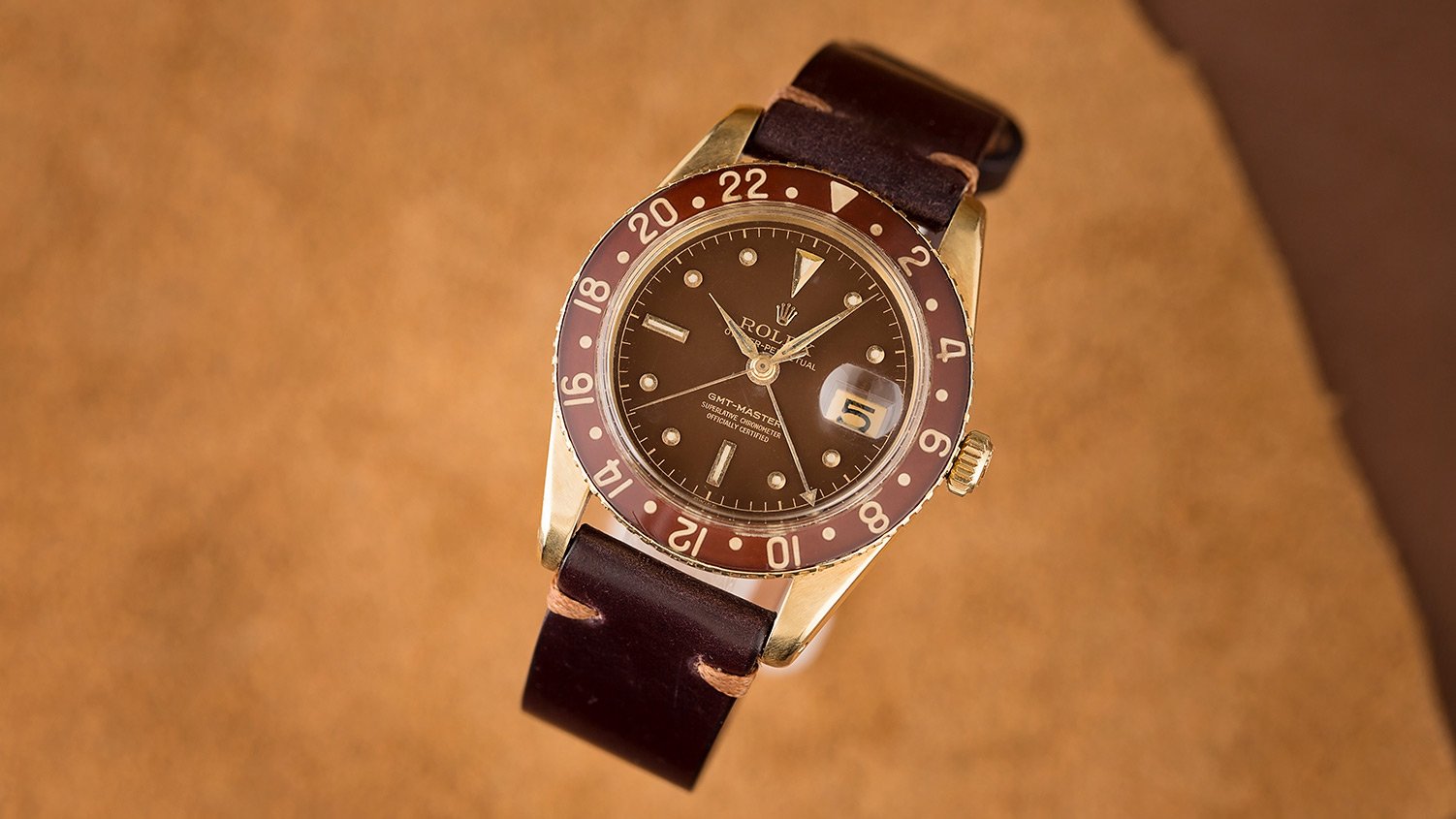
Manufacturing Periods & Reference Numbers: GMT-Master vs. GMT-Master II
To simplify the matter, let’s first look at the production years of each watch. Unsurprisingly, the Rolex GMT-Master came first, with its official release in 1955. As many of you probably already know, the Rolex GMT-Master was built as a tool watch for Pan Am pilots to keep track of two time zones simultaneously as they traveled greater distances across the globe.
To do this, Rolex furnished the GMT-Master with a pair of center hour and minute hands to indicate the local time along with an extra 24-hour hand to display a second time zone by pointing to the 24-hour-marked rotating bezel.
Rolex manufactured four generations of the GMT-Master watch with the following reference numbers and production periods:
- GMT-Master ref. 6542: 1954-1959
- GMT-Master ref. 1675/x: 1959-1980
- GMT-Master ref. 1675x: 1981-1988
- GMT-Master ref. 16700: 1988-1999
On the other hand, Rolex unveiled the GMT-Master II collection in 1982. Although the GMT-Master II would eventually completely replace the GMT-Master collection, there was some overlap in manufacturing among the two collections in the 1980s and 1990s because ref. 16700 offered a more affordable price than the newly-minted GMT Master II and was still widely sought-after.
There are also four generations of the GMT-Master II to date:
- GMT-Master II ref. 16760: 1982 – 1988
- GMT-Master II ref. 16710: 1989-2007
- GMT-Master II ref. 11671x: 2007 – present
- GMT-Master II ref. 12671x: 2018 – present
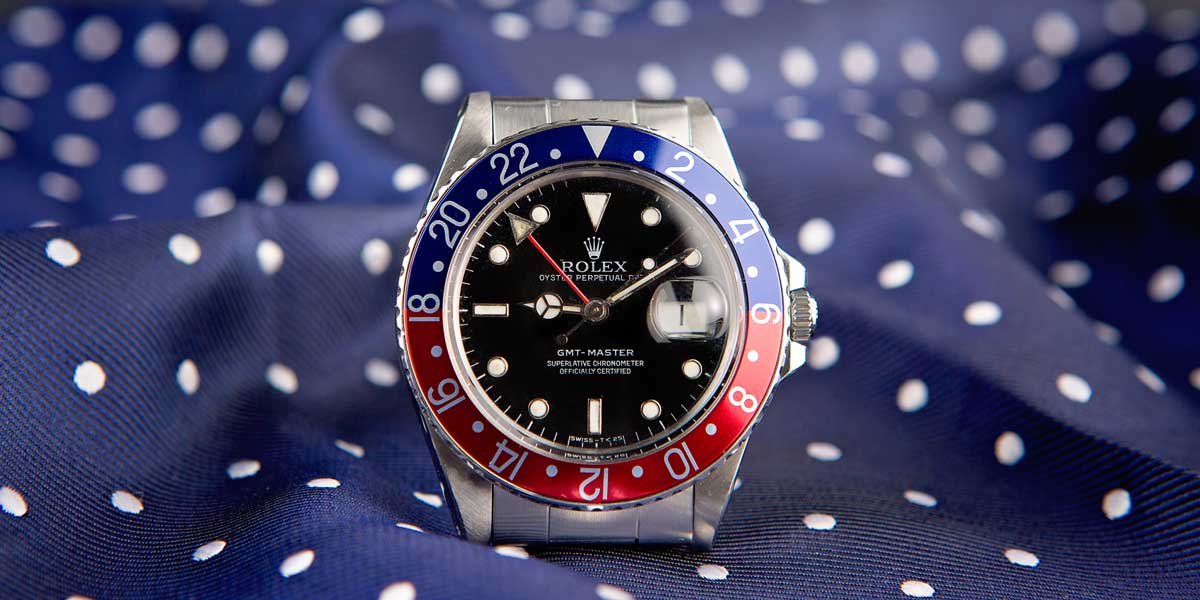
Key Features of the GMT-Master:
Case Diameter: 38mm (ref. 6542 & 1675/X); 40mm<
Materials: Stainless Steel; Yellow Gold; Steel & Yellow Gold
Features: Time + Running Seconds; Date Display; GMT Functionality
Dial: Black; Brown
Bezel Material: Bakelite (early ref. 6542’s only); Aluminum
Bezel Colorways: Black; Blue (aka Blueberry); Blue & Red (Pepsi); Root Beer in either all brown or two tone
Movement: 1036; 1065; 1066; 1565; 1575; 3075; 3175
Water-Resistance: 50 meters (ref. 6542 & 1675/X); 100 meters
Bracelet: Oyster; Jubilee
Crystal: Acrylic; Sapphire (ref. 16700 only)
Lume (in order of production use): Tritium; Luminova
Key Features of the GMT Master II
Case Diameter: 40mm
Materials: Stainless Steel; Yellow Rolesor; Everose Rolesor; Everose Gold; White Gold; Yellow Gold
Features: Time + Running Seconds; Date Display; GMT Functionality; Independent 24-Hour Hand
Dial: Black; Brown; Green (yellow gold anniversary model only); Blue (white gold model only); Meteorite (white gold model only); Serti Dial (yellow gold and two-tone models only)
Bezel Material: Aluminum; Cerachrom
Bezel Colorways: Black; Brown (Root Beer); Blue & Red (Pepsi); Black & Red (Coke); Cerachrom only: Black & Blue (Batman); Black & Brown (Modern Root Beer)
Movement:> 3085; 3185; 3186; 3285
Water-Resistance: 100 Meters
Bracelet: Oyster; Jubilee
Crystal: Sapphire
Lume (in order of production use): Tritium; Luminova; Superluminova; Chromalight
Functionality: GMT-Master vs. GMT-Master II
At first glance, the GMT-Master and the GMT-Master II may look like the same watch, but if you look under the hood, you’ll soon see that the biggest difference between the two models is the type of functionality the movements inside the watches offer.
As we previously mentioned, the GMT-Master allows wearers to read two time zones simultaneously. Conversely, the GMT-Master II permits the reading of three separate time zones. Rolex made this possible by making the 24-hour hand independent from the center hour and minute hands.
Therefore, the center hands indicate local time, the 24-hour hand can move freely around the dial to point to the 24-hour bezel for a second time zone, and turning the rotating bezel in either direction can tell the time in a third time zone.
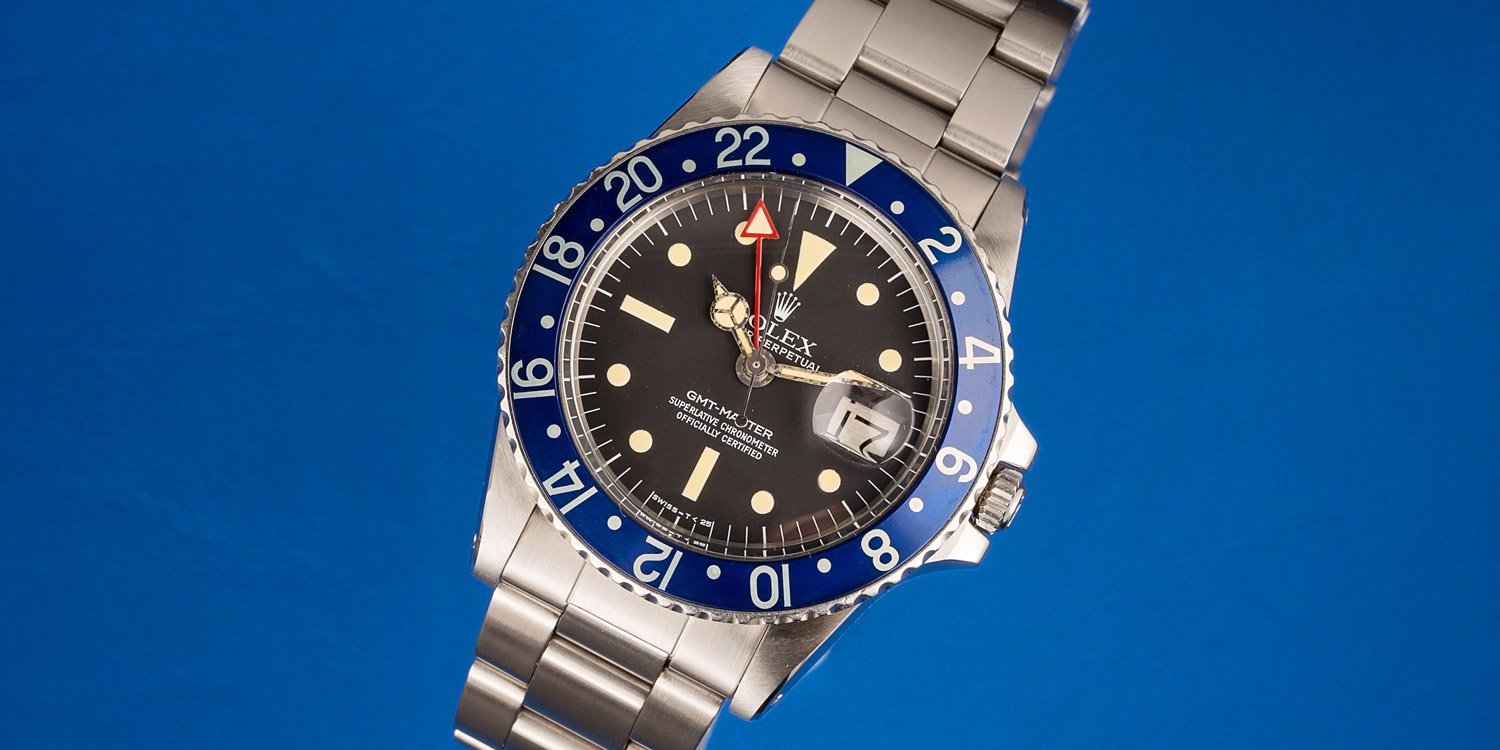
Design and Materials: GMT-Master vs. GMT-Master II
Depending on the specific reference and production period, there are stainless steel, two-tone yellow gold and stainless steel, and full yellow gold versions of the GMT-Master. Furthermore, depending on the watch’s case material, there are a few different bezels to choose from, including (on very early models) Bakelite blue and red bezels, aluminum blue and red bezels, aluminum black bezels, aluminum brown and beige bezels, aluminum brown bezels, and aluminum blue bezels (very rare). Both Oyster and Jubilee bracelets are found on GMT-Master watches.
To confuse the matter even more, the luminous material used on the dial will also vary depending on the year produced. Radium was used in very early editions of the first GMT Master ref. 6542. However, Rolex soon replaced it with Tritium after discovering just how dangerous Radium lume was. Luminova replaced Tritium around the late 1990s.
Alternatively, Rolex has offered the GMT-Master II watch in many more material options: stainless steel, Yellow Rolesor pairing yellow gold with stainless steel, Everose Rolesor pairing Everose gold with stainless steel, solid white gold, solid yellow gold, and solid Everose gold. What’s more, bezel options are more varied too. Early in the GMT-Master II history, bezels were crafted in aluminum, available in red and blue, black and red, brown, and just black.
However, starting in 2007, Rolex began fitting the GMT-Master II watches with Cerachrom ceramic bezels. Today, there are red and blue, black and blue, black and brown, and black ceramic bezels available within the GMT-Master II collection. Current production models only feature the two-tone bezel variations. The all-black ceramic bezel option was recently discontinued alongside ref. 116710. Only time will tell if it makes a comeback.
Plus, Rolex has also made ultra-luxurious versions of the GMT-Master II watches with gem-set Serti dials and bezels using precious stones such as diamonds, sapphires, and rubies. Depending on the specific reference number, GMT-Master II watches come with either an Oyster bracelet or a Jubilee bracelet. Lastly, the GMT Master II has employed nearly every luminescent material used by Rolex during its production run, including Tritium, Luminova, Superluminova, and, finally, Chromalight. Chromalight is the latest and greatest lume offered by Rolex, praised by the brand for its stark white appearance in the light and bright blue glow in the dark.
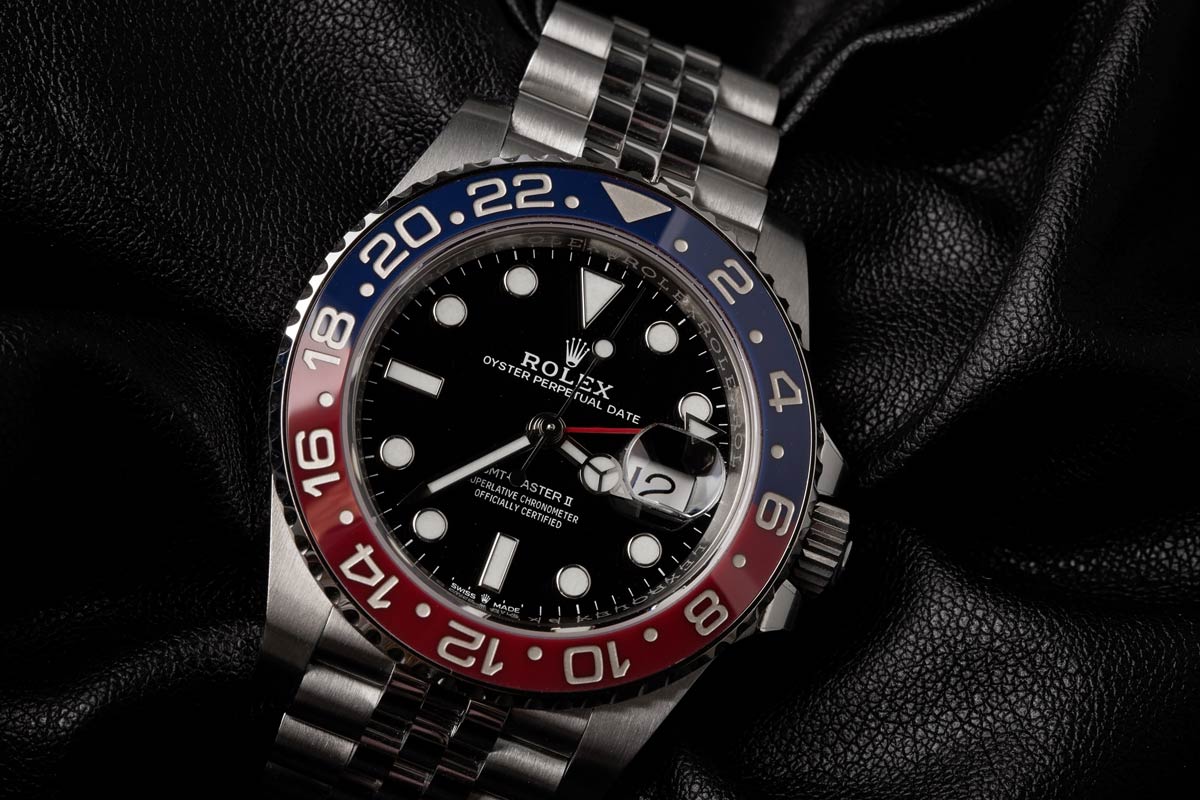
Rolex Nicknames
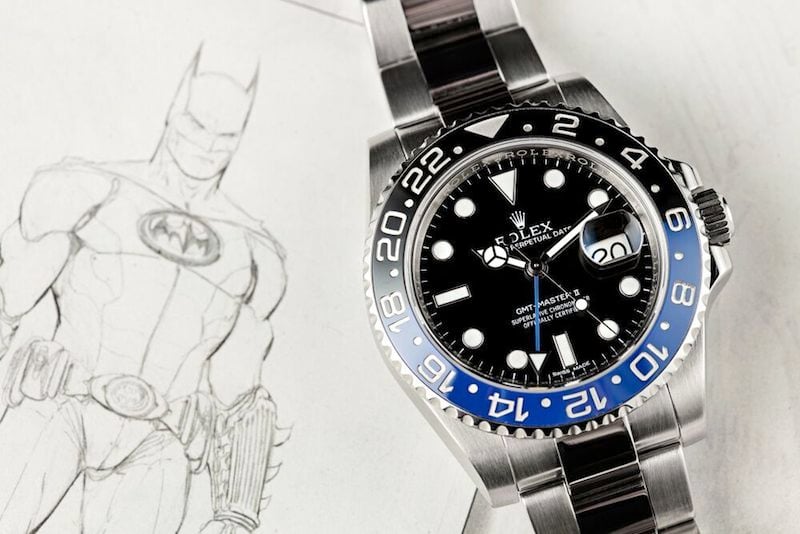
Many of the GMT Master and GMT Master II watches received a nickname from the general public for their color scheme, including Coke (red/black), Pepsi (red/blue), Root Beer GMT Master (brown/beige), Root Beer GMT Master II (brown/black), Blueberry (all blue), and Batman (black/blue). Other charming nicknames include the Pussy Galore ref. 6542 named after its association with the James Bond character and the Sophia Loren/Fat Lady, a name it earned after the thicker case.
The Transition From GMT-Master To GMT-Master II
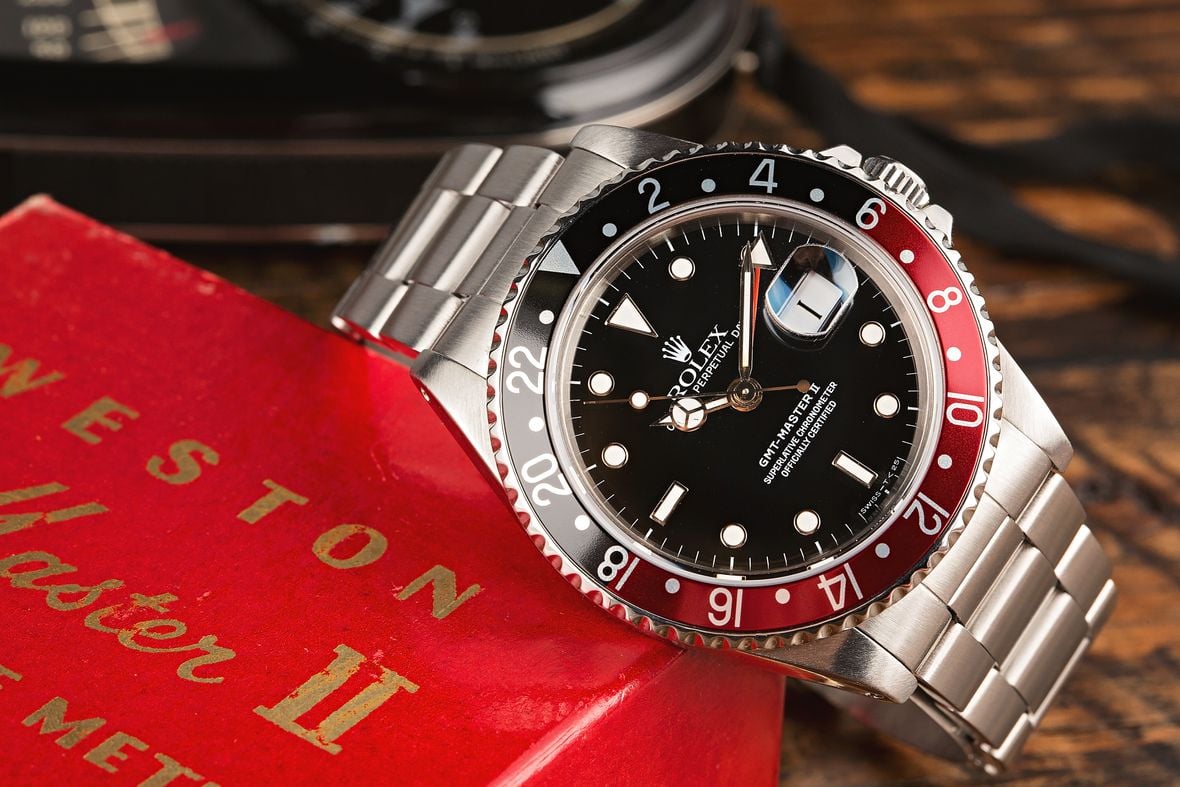
At the turn of this century, Rolex focused exclusively on making the GMT-Master II collection and discontinued production of the GMT-Master models. And Rolex continues to enhance their famed pilot watch line with new models, materials, and calibers as we continue to see year after year. It’s clear that this is one Rolex watch that will continue to soar for decades to come.
Key Takeaways: GMT Master vs. GMT Master II
For the sake of brevity, this overview will only include 5-digit GMT Master models and newer and serves to highlight the main differences between the two collections. Scroll up for a more detailed listing of the key features of the GMT Master and GMT Master II.
| GMT Master | GMT Master II | |
| Case | 40mm | 40mm |
| Depth Rating | 100 Meters | 100 Meters |
| Independent GMT Hand? | No | Yes |
| Time Zones | 2 | 3 |
| Bezel Material | Aluminum | Aluminum; Cerachrom Ceramic |
| Bezel Colors | Black; Blue; Pepsi; Root Beer (Brown/Beige) | Black; Pepsi; Coke; Root Beer (Brown/Black); Batman |
| Crystal | Acrylic; Sapphire | Sapphire |
| Lume | Tritium; Luminova | Tritium; Luminova; Superluminova; Chromalight |
| Dial Colors | Black; Brown | Black; Brown; Green; Blue; Serti; Meteorite |
| Bracelet | Oyster, Jubilee | Oyster, Jubilee |

